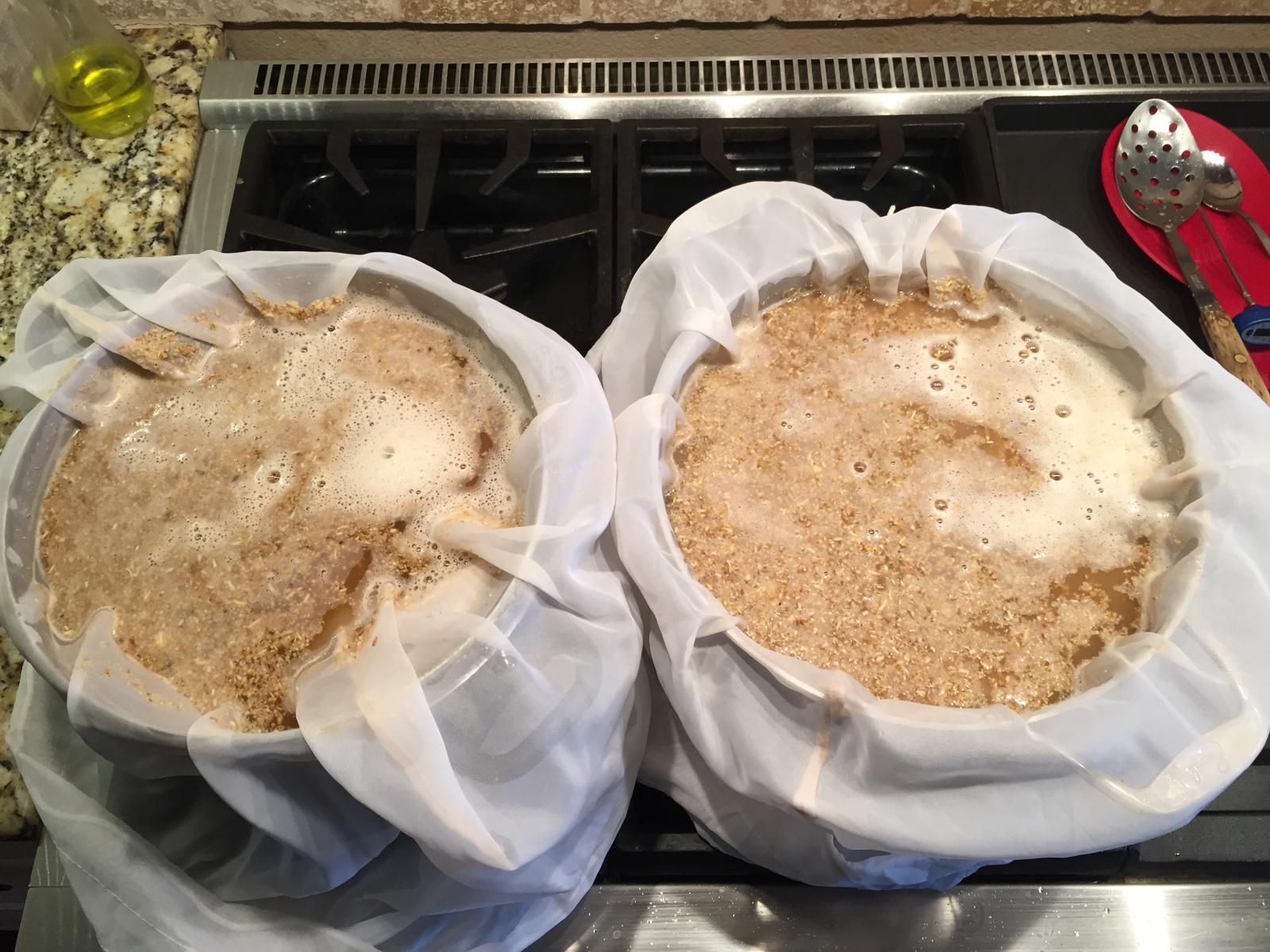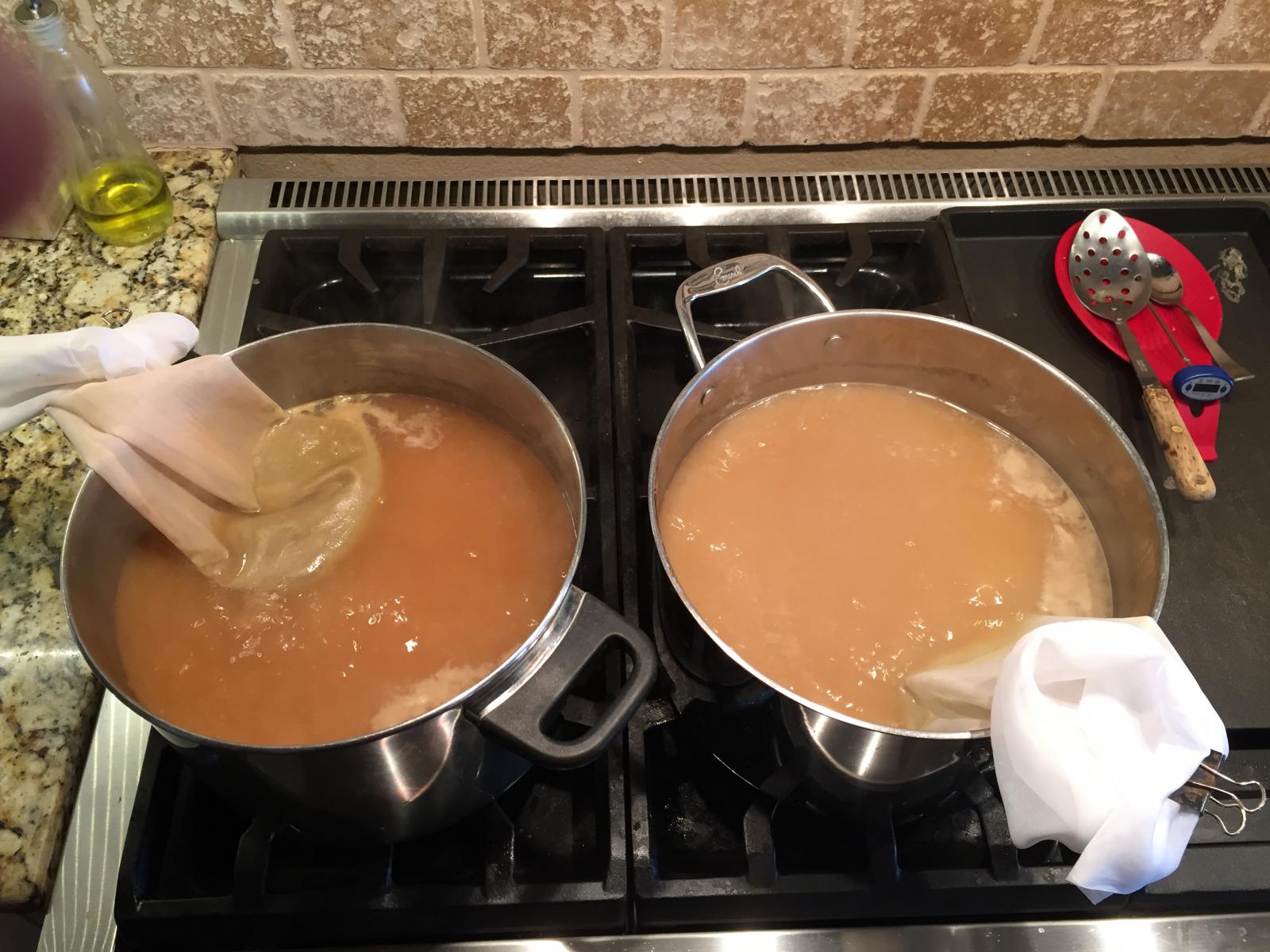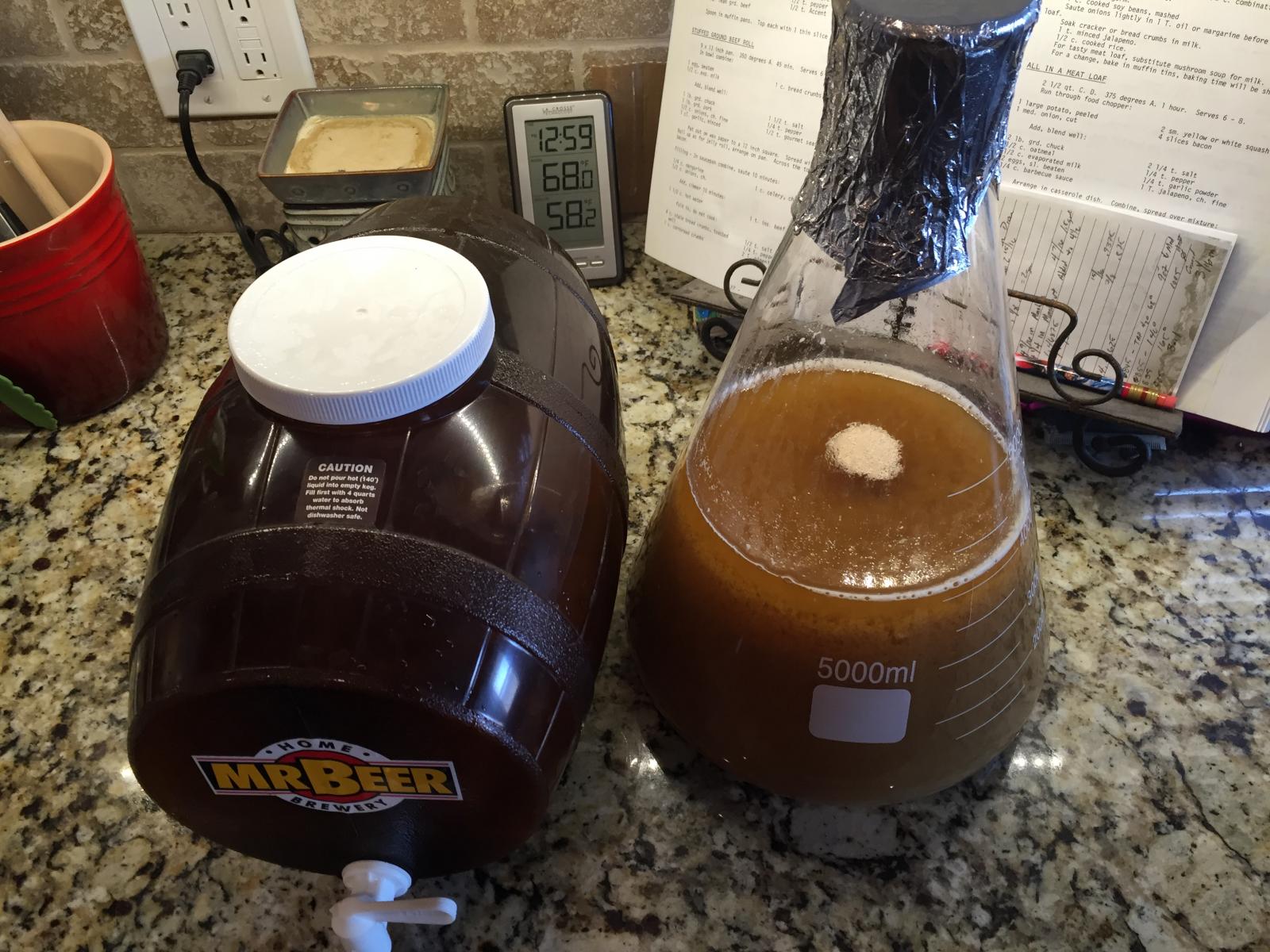Your wife can't smell?
I would have screwed up doing all the different schedules. The heady clone I did actually came with hop oil syringes!
Do you have a copy of the pliney clone?
Nope she can't smell, I can fart in the car on a hot summer day and she can't smell it.
Recipe: The Plinian Legacy Double IPA AGK 1g
Asst Brewer:
Style: Imperial IPA
TYPE: All Grain
Recipe Specifications
--------------------------
Boil Size: 1.79 gal
Post Boil Volume: 1.04 gal
Batch Size (fermenter): 1.00 gal
Bottling Volume: 1.00 gal
Estimated OG: 1.080 SG
Estimated Color: 7.4 SRM
Estimated IBU: 195.6 IBUs
Boil Time: 90 Minutes
Ingredients:
------------
Amt Name
2 lbs 13 oz Pale Malt (2 Row) US
2.0 oz Carapils (Briess) (1.5 SRM)
2.0 oz Carastan (35.0 SRM)
0.04 oz Amarillo [9.20 %] - Mash Hop
0.30 oz Columbus (Tomahawk) [14.00 %] - Boil 90.
0.14 oz Columbus (Tomahawk) [14.00 %] - Boil 45.
0.14 oz Simcoe [13.00 %] - Boil 15.0 min
2.3 oz Corn Syrup (1.0 SRM) Flame Out
0.36 oz Simcoe [13.00 %] - Steep/Whirlpool 20min
0.21 oz Centennial [10.00 %] - Steep/Whirlpool 20min
0.29 oz Columbus (Tomahawk) [14.00 %] - Dry Hop
0.19 oz Centennial [10.00 %] - Dry Hop 14.0 Days
0.19 oz Simcoe [13.00 %] - Dry Hop 14.0 Days
0.10 oz Columbus (Tomahawk) [14.00 %] - Dry Hop
0.10 oz Simcoe [13.00 %] - Dry Hop 7.0 Days
0.05 oz Amarillo [9.20 %] - Dry Hop 7.0 Days
0.05 oz Centennial [10.00 %] - Dry Hop 7.0 Days
I took the NB Pliney Clone scaled it with BeerSmith and subbed the Hop Shot with Columbus to match IBU.








